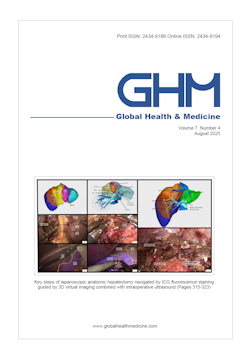Global Health & Medicine 2019;1(1):30-35.
Diabetic dyslipidemia: evaluation and mechanism.
Yanai H, Hirowatari Y, Yoshida H
Diabetes is one of the well-established independent risk factors for cardiovascular diseases. Diabetes induces dyslipidemia which is characterized by elevated fasting triglyceride (TG) and reduced high-density lipoprotein-cholesterol (HDL-C), and such diabetic dyslipidemia is a crucial determinant for atherogenesis and atherosclerotic progression in patients with diabetes. Previous measurement methods of lipoproteins have problems including time-consuming (ultracentrifugation) and inaccurate and impossible measurements of TG-rich lipoproteins such as chylomicron, intermediate-density lipoprotein (IDL) and very low-density lipoprotein (VLDL). Our developed anion-exchange high-performance liquid chromatography (AEX-HPLC) can measure all fractions of lipoproteins accurately. Our studies using AEX-HPLC showed that IDL and VLDL in type 2 diabetes were higher than non-diabetic subjects, and IDL and VLDL were higher in the order of type 2 diabetic patients with obesity, type 2 diabetic patients without obesity, and non-diabetic subjects. Here, we also describe the underlying mechanisms for development of diabetic dyslipidemia.
DOI: 10.35772/ghm.2019.01007







